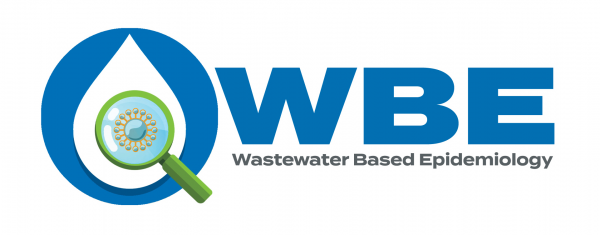
Resource Toolkit
CASA has created a Resource Toolkit to aid in agency outreach, we hope that these tools are simple enough to “copy + paste” to social media platforms or other communications, so that you and your teams can keep continued focus on the pressing issues facing agencies at this time. Please feel free to use any of this content or information as you see fit.
Social Media Content:
Generic – What is WBE?
You’ve heard the term but what is WBE? Individuals infected with COVID-19, both asymptomatic and symptomatic, shed the genetic material (RNA) of the virus in bodily waste that find their way to the sewerage system. Wastewater Based Epidemiology is the testing of raw wastewater to track COVID-19 by allowing communities to track whether the scale of outbreak is declining, increasing, or has plateaued.
WBE – Part of the Solution
As essential workers it is always our goal to be part of the solution, that is why we are participating in Wastewater Based Epidemiology studies to track the presence of the COVID-19 virus. We are collecting samples of the sewage and sending it to labs to be tested and analyzed. WBE allows communities to track whether the scale of outbreak is declining, increasing, or has plateaued. If an increase in the presence of the virus is observed, existing protocols used commonly in the wastewater pretreatment program can be employed upstream to identify the specific area so that individual testing may then be used for mitigation purposes.
WBE – Testing
Because wastewater treatment plants collect wastewater from large regions, testing untreated wastewater for the virus may help determine whether the number of infected people is increasing or decreasing in the region. Testing the wastewater can help public health experts manage the pandemic and that is exactly what we are doing.
Wastewater as a Surveillance Tool to Identify the Prevalence of COVID-19 in Communities
With the current spread of the new Coronavirus, SARS-CoV-2 (COVID-19), the topic of finding new ways to protect public health is of vital concern and finding new ways to track the disease is imperative. The wastewater sector is beginning to answer the call and take the next step in furthering its protection of public health and the environment.
Many California wastewater agencies have begun testing influent wastewater for the COVID-19 virus as a means of understanding community outbreak and positioning along the curve. Taking advantage of Wastewater Based Epidemiology (WBE), testing for incidences of the COVID-19 in sewage, experts can determine whether the virus has been shed in the agency’s community, and if so, whether it is increasing or decreasing. Monitoring wastewater influent offers community and state leaders a unique set of data that can be used to evaluate if the virus is present in a community, even if individuals are asymptomatic. This data should be critical in determining where the virus is still presenting issues and areas where infection rates are declining. Testing influent wastewater can also be far more revealing of the community trends and is potentially much more cost effective.
Many CASA member agencies have elected to take part in influent testing to further efforts in understanding and tracking this new disease. CASA is aware of a variety of universities (e.g. University of Arizona, Stanford, University of South Carolina, UC Berkeley) and private labs (e.g. Biobot, CosmosID) offering such surveillance and we are working to understand the different methodologies, protocols, and costs associated with each. This new effort is a great example of how the wastewater sector is now, and always will be, a critical component to protecting public health. It is important to remember that these are still the preliminary stages of testing, and the wastewater sector will continue to do everything in its power to protect public health and the environment while providing an essential service.
CASA continues to support these efforts by coordinating with member agencies engaged in testing to share experiences, working with other associations and federal agencies to demonstrate value, and collaborating with researchers, academics and companies at the forefront of this testing effort.
Partner Publications
NACWA Releases White Paper for Clean Water Utilities Considering Epidemiological Surveillance of Wastewater for COVID-19
Articles
Orange County Register: Poop tests in sewage might predict coronavirus surge
State of Green Denmark: Analyzing wastewater can detect second wave of COVID-19 activity
E&E News: How sewage reveals ‘real numbers’ on scale of outbreak
CDM Smith: CDM Smith Launches R&D Effort to Predict COVID-19 Outbreaks via Wastewater Analysis
NY Times: https://www.nytimes.com/2020/05/01/science/coronavirus-sewage-monitoring-lockdown.html
Politico: https://www.politico.com/news/2020/05/01/cdc-human-waste-coronavirus-222253
Bloomberg: https://www.bloomberg.com/news/articles/2020-03-31/coronavirus-in-sewage-portended-covid-19-outbreak-in-dutch-city
Nature: https://www.nature.com/articles/d41586-020-00973-x
KQED: https://www.kqed.org/science/1963120/one-way-to-monitor-a-communitys-coronavirus-infections-raw-sewage
LA Times: https://www.latimes.com/california/story/2020-04-29/coronavirus-sewage-testing
Community Surveillance of Coronavirus in Wastewater
- CASA Coalition Letter to Bill and Melinda Gates Foundation
- CASA Coalition Letter to Rockefeller Foundation
- 6-2-20 CASA WBE Ltr CDC; 6-2-20 CASA Fact Sheet on WBE
- CDC Response to CASA Letter
- 07-23-20 Calapuig, Pablo – GoAigua – WBE for Spanish Government. Link to a webinar GoAigua did last Thursday with OneWaterAcademy, on the experience they have implemented in Spain, where they implemented a sewer surveillance system for 20+ cities, with 5+ million inhabitants, and 500+ sampling locations at a sewershed/neighborhood level: https://attendee.gotowebinar.com/recording/5022048355643612417
- Sinclair, et al. – Pathogen Surveillance Through Monitoring of Sewer Systems – Argues that wastewater surveillance can identify pathogenic loads in a community prior to, and during, an outbreak.
- Barber G. – One Way to Potentially Track COVID-19: Sewage Surveillance. Wired 4/7/2020 – Stanford University under Dr. Alexandria Boehm are collecting wastewater samples from municipal agencies throughout the San Francisco Bay area. They are frozen in anticipation of future analyses to determine the level of presence of SARS-CoV-2 and to determine the community presence of the virus.
- Wu, F. et. al., SARS-CoV-2 Titers in Wastewater are Higher than Expected from Clinically Confirmed Cases. MEDRxIV 04/05/2020 – Analyzing wastewater influent at a large Massachusetts Wastewater Treatment plant for SARS-CoV-2 found it at higher levels than expected given the number of confirmed cases in the community. It may be an indicator that there are more cases which are undiagnosed in the population.
- The current spread of the new Coronavirus (SARS-CoV-2) which causes the COVID-19 disease is of pressing public health concern. The University of Arizona WEST Center is able to assist communities by testing for incidence of the Coronavirus in sewage. Testing influent wastewater for the SARS-CoV-2 (COVID-19) virus is a pragmatic means of understanding community outbreak and positioning along the curve. They are able to determine whether COVID-19 has been shed in your community and if so, what percentage of it remains viable. Monitoring sewage can be used to evaluate if the virus is present in a community even if individuals are asymptomatic (i.e. show no visible symptoms). It can also quantify potential risk of infection to wastewater workers. https://west.arizona.edu/news/2020/03/sewage-surveillance-west-tests-wastewater-determine-coronavirus-presence-communities
- Wastewater-based epidemiology may offer clues: EurekAlert reports that a new approach to monitoring coronavirus is being developed and refined. Know as wastewater-based epidemiology, the method mines sewage samples for vital clues about human health. In a new study, Arizona State University researchers analyze what can and cannot be measured when tracking SARS-CoV-2 in wastewater, and they highlight the economic advantages of the new approach over conventional disease testing and epidemiological surveillance.
For access to further materials including photos, draft articles, presentations, videos, and media contacts, please contact Alyssa Downs at adowns@casaweb.org.



 @CASA_CleanWater
@CASA_CleanWater